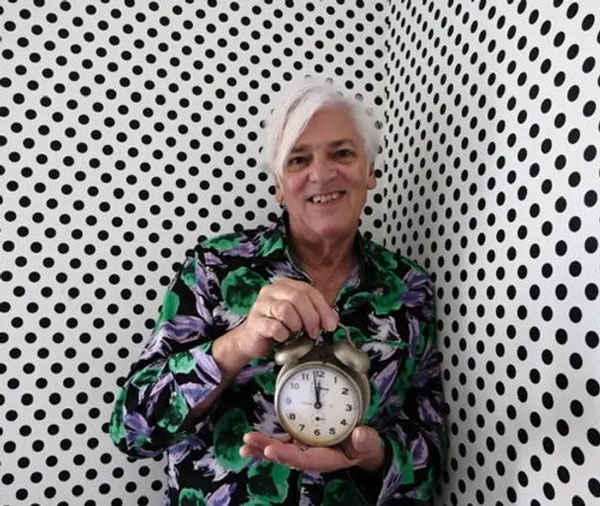By Gary Wien
originally published: 01/26/2012
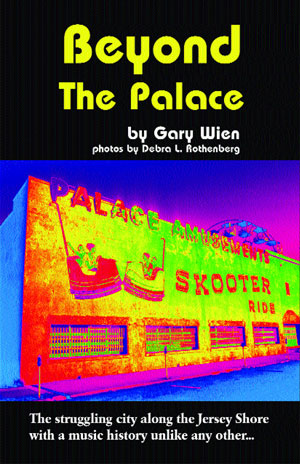 The Stone Pony has always had a strange run during its history. From its early days as a disco bar to the heights of the Asbury music scene when the club would be packed night after night with lines around the block, the bar had seen it all. As the town itself moved further into ruin, the Pony remained the one constant you could count on.
The Stone Pony has always had a strange run during its history. From its early days as a disco bar to the heights of the Asbury music scene when the club would be packed night after night with lines around the block, the bar had seen it all. As the town itself moved further into ruin, the Pony remained the one constant you could count on.“I guess people didn’t realize what was going on around them,” said Lee Mrowicki, the Pony’s long-time disc jockey. “There was change and it wasn’t change for the good it was change for the worst. The other day as I was standing outside I was trying to point out to somebody where the roller coaster was. Back in 1976 there was the Tilt-A-Whirl and the whole boardwalk was full of rides. By the mid-80s, the roller coaster was gone and so was the Tilt-A-Whirl, but the miniature golf place and the batting cages were still there. In the late 80s, that’s when it was really nothing.
“The two owners were pretty astute at booking concerts, so we just continued. It was kind of weird because we were in that realm where we were in the redevelopment mode and we knew a lot of big changes were coming but nobody knew everything was going to go into a bankruptcy. We were just waiting for things to happen.”
What ultimately happened was truly unexpected. The Stone Pony closed its doors when a series of drunk driving-related lawsuits forced the club into bankruptcy. Music fans from around the country were shocked while local fans went on about their business. Asbury Park just wasn’t the place to go in that period of time. And if the locals did go to a show in Asbury they most likely headed over to the Saint which was booking the hipper, more exciting bands.
Mrowicki remembers the last day was a benefit show for Susan Hector, the wife of guitarist Billy Hector. “The next day when I had to go over to the club to change the answering machine tape, which I did every Monday, I found there was a padlock on the door,” said Mrowicki. “And that was it. I called the owners and said, ‘Hey, there’s a padlock on the door. What’s going on here?’ And later the sign said closed to bankruptcy, all questions to be referred to the trustee.
“The weird thing about the bankruptcy was that originally that place had been thriving. The two owners really made a huge financial mistake in declaring bankruptcy. It wasn’t that the place wasn’t making money, it was just the opposite.”
Several of the club’s employees tried to reopen the club themselves. They hired an attorney in an attempt to get the bankruptcy settled. According to Mrowicki, the employees had been hooked up with Joe Piscopo and some real estate investors who arranged to get a mortgage for them to buy back the Pony.
“The bankruptcy court, instead of taking our mortgage took the cash that the guy from Long Branch had,” said Mrowicki. “But he had been around before that. In fact, he had been introduced to me and we had long discussions about how to resurrect the place and stuff. There he was against me in federal court.”
The guy from Long Branch was Steven Nasar, a man that had never run a club before. He bought the Stone Pony with the thought that the name alone with bring the crowds back. It officially reopened in October 1992, one year after it had closed. The first band to play was Carter, the Unstoppable Sex Machine. This was the first sign that things would be different this time around. Interior changes within the club itself was the second.
Nasar changed the club so much that he alienated regular customers and musicians alike. The place just didn’t have the same vibe anymore. The Stone Pony had been living off of its history for years and Nasar appeared anxious to erase such memories. After several years of trying, along with some well-publicized problems with hardcore and punk shows, Nasar finally gave up on rock and roll. He decided to abandon the Stone Pony name and create Vinyl, a dance lounge aimed at attracting a Manhattan-like crowd.
The new club opened in September 1998, but the Stone Pony had one final moment to itself. It was billed as the “Stone Pony’s Last Ride,” three days of music celebrating the three decades in which the club was open. Such acts as Cold, Blast and Steel (ironically, the first rock and roll band to perform at the Stone Pony), the George Theiss Band, Paul Whistler and the Wheels, Cats on a Smooth Surface, Mike Dalton and the Push, Buzzed Meg, the Outcry, Samhill, Bobby Bandiera Band, Gutwrench, Union Spirit, Mudbox, Strange Environment and the Lord Gunner Group all performed.
“For the last party Eileen had called me because she was organizing the ‘funeral,’” said Mrowicki, who had never been to the club under Nasar’s ownership. “And I said to her, ‘You’re going to actually raise money for this guy to close the place?’ I didn’t see a reason to pay for a funeral. And I wouldn’t raise money for him anyway.”
There are very few clubs with such name recognition or history as the Stone Pony. In fact, many clubs are lucky to see their 10th anniversary much less find themselves still open after 20 years. Still, it was a very sad period of time for the Jersey Shore and music fans from all over the world came to say goodbye to the club that Bruce Springsteen and Southside Johnny made famous. But the club that they loved was hardly recognizable.
The dance area in front of the stage was covered with new flooring. The stage itself had been moved from its original location to the opposite wall and replaced with a smaller stage. Each of the three bars were moved to new areas as well. The dingy, dark look of rock and roll was replaced by carpeting, lounge furniture and peach colored walls.
“I remember walking into the club and thinking what a God-awful job the decorators had done!” said Maggie Powell, a European music journalist. “Dado rails and peach colored walls at the Pony? And why was the stage relocated? The decor felt wrong somehow and it didn’t feel like the same Pony I was lucky enough to visit during my trip in 1995. But when the music started I very quickly forgot about the color of the walls!”
It was a strange weekend. Bands that hadn’t played the Pony for years gave the final goodbyes to the club, fans that had never been to Asbury Park before came to see what they had been missing and for three more days Asbury rocked and rolled all throughout the night.
“Honestly, I personally felt very lucky and honored to be one of the bands that was asked to play that show,” said Mike Dalton. “Playing the Pony was my dream when I was cutting my teeth on the Shore circuit so playing there was special enough. And then to be asked to be part of that night made me feel like a permanent part of the Pony legacy. It’s a very special thing to me.
“The intensity of the crowd was very high and we fed off of it. We felt we had a really energetic and special performance. The vibe was good, but I really wish we were on the good old stage with the Pony on the wall behind me,” added Dalton. “I’m not gonna lie, I didn’t like it. I didn’t feel like I was in the Stone Pony. It was kind of sad, but there was also the feeling that it wasn’t really gonna be over. Personally, I always thought it would come back as the Pony again and it did!”
While some fans were hoping for Bruce Springsteen or Bon Jovi to make an appearance, Southside Johnny surprised the crowd by joining his buddy, Bobby Bandiera, for three songs. The odds of a Springsteen sighting were pretty slim since he hadn’t made a guest appearance at the Pony since 1995. In recent years, Bruce could be more likely be found guesting with bands in clubs like the Metro in Long Branch or Tradewinds in Sea Bright. After all, it was clear that this was no longer the same club he fell in love with.
Even without an appearance from Bruce, the final weekend was ultra special for everyone involved. Each band played their sets at a slightly higher than usual level. The Pony was packed and it seemed to have that sort of energy, that sense of history in the making that always made the club more than just a bar.
“You could feel that it was electric,” recalled Hal Selzer, a longtime veteran of the Jersey Shore scene who played that night as a member of the Bobby Bandiera Band. “Having everybody there and seeing all of the musicians that you knew from the whole scene was pretty cool. People were jamming with different people. Playing on stage was really fun. I remember we had the horns and Southside and everything.
“It was just as much fun being backstage because all the musicians were there. Since everybody’s always gigging or touring you don’t get to hang out much with your fellow musicians and friends. That night was a great excuse to get together.”
Having made its mark in rock history, the stained-glass pony behind the main bar was given to the Rock and Roll Hall of Fame in Cleveland, Ohio. Robert Santelli, the Director of Education for the Hall of Fame accepted the gift. Santelli was raised along the Jersey Shore and was a regular at the Pony during the 70s when much of the club’s history took place.
“I don’t remember giving it a lot of thought until that night,” said Selzer. “I remember hearing Bob Santelli say, ‘I’m taking this to the Rock and Roll Hall of Fame’ and it made me really think.”
The sense of history was even more apparent for the people from around the world that came for the last weekend. “Like so many other people who live so far away from the Shore, most of what I’ve learned about the Shore’s music history I’ve learned from other people,” said Maggie Powell, who came all the way from Germany for the final weekend. “So, it was an incredibly special night for me to be there and see some of the artists I’d only ever read about actually perform on the Pony’s famous stage.”
After that weekend, Vinyl took over but it didn’t stay around very long. Within a few months the former home of the Stone Pony was nothing more than a boarded up, abandoned building. Just another piece of rock and roll history discarded as the Upstage, the Student Prince and the Sunshine In had been discarded many years before. The difference this time around was found in a man named Domenic Santana.
In 2000, Domenic Santana and a partner purchased the Stone Pony with a plan to bring the club back to its former glory. Santana was a successful restaurant owner with a background in producing and holding special events. If anyone could return the Stone Pony to its rightful place in music history it was him.
The new owners spent over $500,000 to purchase and renovate the club. They not only restored it to the way it looked before but made several improvements as well. A new sound system was installed which dramatically improved the sight lines within the club. Instead of huge speakers beside the stage (obscuring the vision of anyone behind them) the speakers are now hanging from the ceiling. In addition, the club finally recognized just how important its history was to music fans. A giant collection of photographs from previous shows throughout the years was put on display along with several photographs of Asbury Park in its glory days. In effect, the Pony itself has become somewhat of a museum.
Ironically, one of the most famous images in Jersey Shore rock and roll history - the “Greetings From Asbury Park” postcard, which was featured on Bruce Springsteen’s first record - actually came out wrong. Hal Selzer remembers being at the Pony the week before it opened when they discovered the mistake.
“I was talking to Domenic,” said Selzer. “We look over at the wall where they’ve got that famous “Greetings from Asbury Park” sign. Domenic looks at it and says to the guy that just put it up, ‘It says Welcome to Asbury Park, you’ve got it wrong! That has to change... you need to fix it!’ And the guy was like, ‘It’s done, we can’t do anything about it. It’s too late.’”
The sign never did get changed and it’s funny because people are literally so used to seeing the “Greetings” postcard that they don’t even notice the error. Nevertheless, the Stone Pony was back in business.
“We are going to wake this city up,” said Santana. “We are going to be the thunder before the storm!”
One of the most important things the Stone Pony did was bring back many of the staff members that had worked there for so many years. Tracy could be found serving drinks again, Lee was back as the disc jockey on Saturday nights - it was almost as if nothing had ever changed.
Lee Mrowicki recalls how Domenic lured him back to the club. “He had approached me actually when Eileen had been managing over at the Fast Lane. They reopened that first. So I had gone there for a press conference to pay my respects to them and say hello to a few musicians and stuff. Outside Ben Buckwald said, “The new owner of the club is upstairs and he wants to talk to you.’ So I went up and this guy had been calling me a few times to try and get me to meet with him. And at that point in time, I had been pretty much semi-retired put it that way. And I didn’t even know that there might be a possibility for it to come back.
“We kind of talked for a long time and the first thing he did was wave the keys in front of my face and said ‘these are yours if you want them,’” recalled Mrowicki. “So I said, ‘Well, let’s talk.’ And we talked about the possibilities of working together, what his visions of bringing back the place to the way it used to be. And he said, ‘I’m not here to re-invent the wheel. You guys already did that. You did a good job of keeping it alive while the place was still running.’”
Mrowicki believes the club renovation was pretty true to its original form. “Things have to change a little bit, but everything was adapted for the better,” he said. “The sound system is tremendous compared to what we used to have. In fact, we used to have to rent sound systems. Back then, I had a separate system apart from the major concert system, which was kind of really just thrown together. And everything is more professional now.”
Santana and his family moved to Asbury Park, proving his commitment and love for the city. Since arriving, it’s rarely been easy for him but he’s not a guy that takes fighting lying down. As the Stone Pony started making headlines again, Asbury Park found itself once again involved in a redevelopment plan. The city was able to finally wrestle control of the oceanfront of the failed bankruptcy of a previous developer. Only one thing stood in its way - the Stone Pony.
The redevelopers had a plan to create condominiums along Asbury’s beachfront and create a new Victorian city. Their plan called for the Stone Pony to move to the former location of the Casino. Many people were in favor of doing this, but thousands more were against it. As word got out over the Internet that the Stone Pony was going to be moved Springsteen fans banded together and an organization called “Save the Stone Pony” was created.
“Save the Pony” rallies were held to let people know about the problem. It culminated on a frigid January day when over 100 fans, undaunted by an oncoming snowstorm, showed their support for the club by waking up early to protest the city’s redevelopment meeting. The fans marched from the Stone Pony to the Berkeley Carteret Hotel where the meeting took place. They gathered in front of the hotel and chanted things like “hell no, we won’t go,” “condos schmondos” and “1-2-3-4 no more condos on the Shore!” In the end, the voices of the people were heard. For now, at least, the club has been saved.
“You always have people that are vocal and it’s a good thing that they expressed their interest and affection for the place,” added Mrowicki. “We appreciate that tremendously. And it’s been like that for years and years because there are people that we call regulars, people that you see on a regular basis at the club. Those people become vocal if their home is being destroyed. The Pony is not just a place, it’s more of an atmosphere, attitude or whatever you want to call it. Because it’s not only the place it is, but it’s the people that go there, who play there and the people who work there that make it what it is. It’s just such a strange combination of things that make it what it is. That’s something you couldn’t duplicate if you had to.”
From the book Beyond The Palace by Gary Wien
Gary Wien has been covering the arts since 2001 and has had work published with Jersey Arts, Upstage Magazine, Elmore Magazine, Princeton Magazine, Backstreets and other publications. He is a three-time winner of the Asbury Music Award for Top Music Journalist and the author of
Beyond the Palace (the first book on the history of rock and roll in Asbury Park) and
Are You Listening? The Top 100 Albums of 2001-2010 by New Jersey Artists. In addition, he runs New Jersey Stage and the online radio station
The Penguin Rocks. He can be contacted at
gary@newjerseystage.com.
FEATURED EVENTS
Narrow results by date, categories, or region of New Jersey.
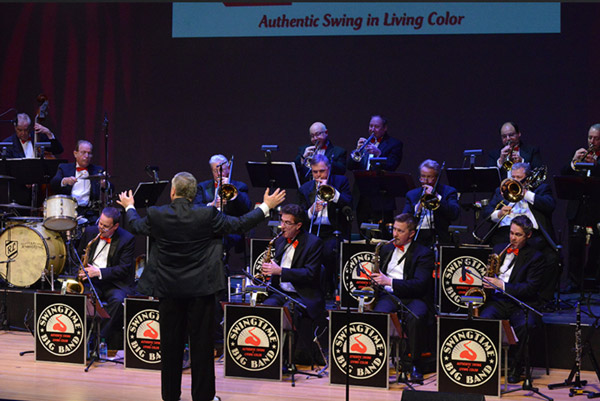
HAPPY FRANKS-GIVING! – Swingtime Big Band Celebrates Sinatra
Saturday, November 23, 2024 @ 8:00pm
Bergen Performing Arts Center (bergenPAC)
30 North Van Brunt Street, Englewood, NJ 07631
category: music
View event page for full information
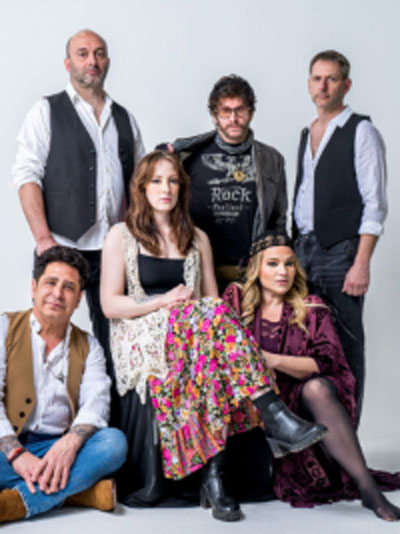
StevieMac: A Fleetwood Mac & Stevie Nicks Experience
Saturday, November 23, 2024 @ 8:00pm
William Paterson University - Shea Center for Performing Arts
300 Pompton Rd, Wayne, NJ 07470
category: music
View event page for full information
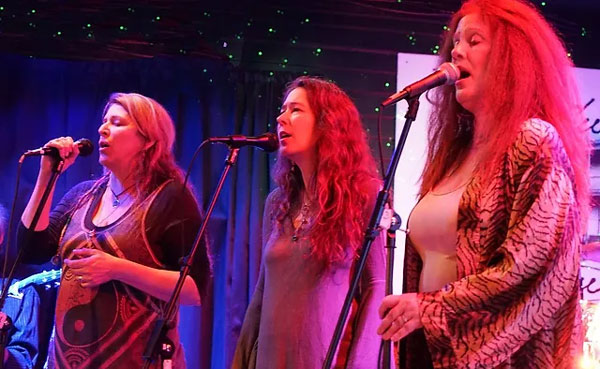
Wooden Ships Band
Saturday, November 23, 2024 @ 7:30pm
Lizzie Rose Music Room
217 E. Main Street, Tuckerton, NJ 08087
category: music
View event page for full information
More events
Event Listings are available for $10 and included with our banner ad packages
EVENT PREVIEWS

Newton Theatre presents The Artimus Pyle Band with Six Gun Sally
(NEWTON, NJ) -- The Artimus Pyle Band comes to The Newton Theatre on Saturday, November 23, 2024. Six Gun Sally will open the night. Showtime is 8:00pm.
UPCOMING EVENTS
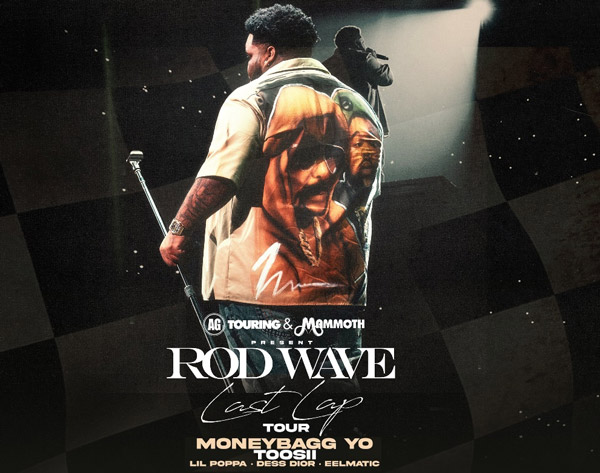
Rod Wave - Last Lap Tour comes to Prudential Center in December
(NEWARK, NJ) -- This Fall, AG Touring and Mammoth, Inc. proudly present the Rod Wave - Last Lap Tour. This large-scale multi-city outing will feature Rod Wave headlining 36 of North America's top arenas coast-to-coast. The tour will kick off on October 19 at Desert Diamond Arena in Phoenix, AZ visiting major markets across the country, including Newark’s Prudential Center on Tuesday, December 3, 2024 with special guests Moneybagg Yo, Toosii, Lil Poppa, Dess Dior and Eelmatic.
 The Stone Pony has always had a strange run during its history. From its early days as a disco bar to the heights of the Asbury music scene when the club would be packed night after night with lines around the block, the bar had seen it all. As the town itself moved further into ruin, the Pony remained the one constant you could count on.
The Stone Pony has always had a strange run during its history. From its early days as a disco bar to the heights of the Asbury music scene when the club would be packed night after night with lines around the block, the bar had seen it all. As the town itself moved further into ruin, the Pony remained the one constant you could count on.






